Hiroshima hopes for disarmament of nuclear-tipped world
By Korea HeraldPublished : Sept. 4, 2016 - 17:07

HIROSHIMA -- As visitors walk through the Hiroshima Peace Memorial Museum, they encounter destruction re-enacted from the doomed morning of Aug. 6, 1945, when an atomic bomb fell and exploded midair above Hiroshima’s epicenter.
Relics from the apocalyptic event, including a scorched bicycle, shredded clothes, warped steel frames, and images of charred victims with unrecognizable faces, serve as a chilling reminder to the onlooking children, parents and couples, aghast at the horrors of their past.
The bomb dubbed “Little Boy,” jettisoned off the United States Army Air Forces plane Enola Gay, instantly obliterated everything within its 2-kilometer radius. It incinerated the city and killed 140,000 people, spewing toxic gamma rays, neutron rays and other radiation that plagued their posterity.
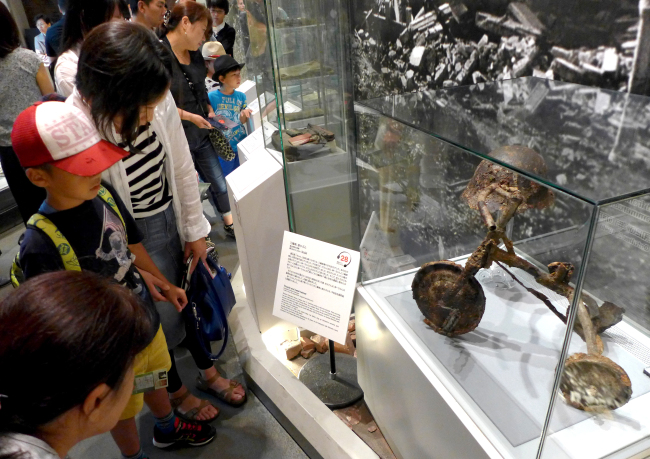
Since the war ended, Hiroshima has been reborn as a city of hope at the helm of worldwide efforts in nuclear disarmament and nonproliferation. The city hosted the G7 meeting of foreign ministers from May 26-27, during which US President Barack Obama paid a visit to the Hiroshima Peace Memorial Park as the first sitting American head of state.
“Among those nations like my own that hold nuclear stockpiles, we must have the courage to escape the logic of fear, and pursue a world without them,” declared Obama, promoting “a world without nuclear weapons.” He offered no apology for the bombing.
With more than 15,000 nuclear weapons remaining in the world -- each far more catastrophic than the one that obliterated Hiroshima and collectively able to extirpate the earth itself -- Obama’s visit was timely and significant, said Professor Kazumi Mizumoto of the Hiroshima Peace Institute at Hiroshima City University.
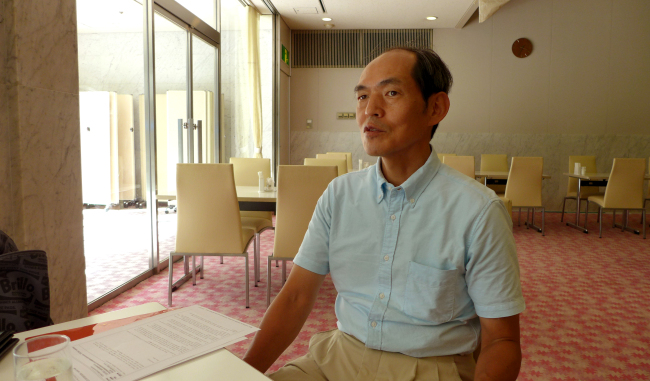
In an interview with The Korea Herald in Hiroshima, Mizumoto added that “contradictory” developments have widened the schism between the global disarmament initiative and Japan’s assertive foreign policy.
Citing Japanese Prime Minister Shinzo Abe’s efforts to arm the country through constitutional revision and the nuclear umbrella provided by Washington, the scholar expressed concern over Tokyo’s diplomacy, which he argued has aggravated regional tensions.
Mizumoto also mentioned Hiroshima’s message for peace on the 71st anniversary of the atomic bombing, the internal politics of Japan, the threat of North Korea’s nuclear and missile provocations and the danger of a civil nuclear program in the earthquake-prone archipelago nation. The following is an excerpt from the interview.
The Korea Herald: What was the significance of Obama’s visit as Hiroshima grapples with the legacy of the atomic bombing?
Kazumi Mizumoto: To a victimized city of the atomic bombing, the first visit of an incumbent US president was important. It showed respect to the survivors, known as “Hibakusha.” However, it was regrettable that while he showed eagerness toward a world free of nuclear weapons, he did not mention any concrete measures to that end, although he did lay out few principles after he returned to the US.
To most people of Hiroshima, Prime Minister Abe’s speech at the Peace Memorial Park was seen as empty of sincere commitment to nuclear disarmament and nonproliferation. They thought it was unnecessary, because Abe merely emphasized his role in bringing Obama to Japan following his address at the US Congress in late April. Obama came to Hiroshima largely through the efforts of local citizens who have dedicated their lives to peace.
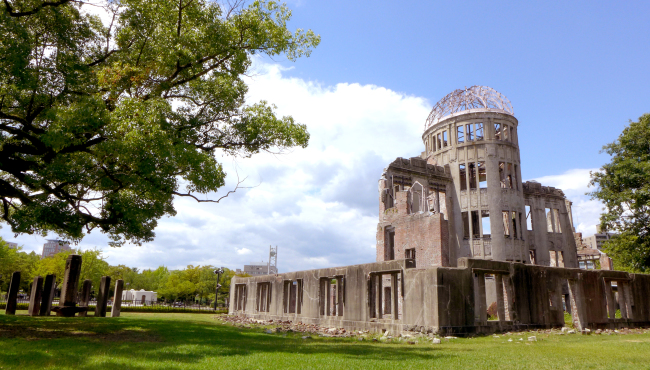
KH: What has been the message of Hiroshima as a city symbolizing peace?
Mizumoto: Our aim has been to convey the reality of atomic bombing and the cruelty of nuclear weapons based on our commitment to universal humanity. While highlighting its danger and atrocity, we have not attempted to justify or whitewash our history, including our attack on the US during World War II, the colonization of the Korean Peninsula and the invasion of China.
Politically speaking, Hiroshima is a very conservative city, a stronghold of the Liberal Democratic Party of Prime Minister Abe. Most congressmen and local politicians belong to the LDP, which makes it difficult to politicize historical penance.
Although our anti-nuclear message has been clear, us openly acknowledging and discussing our past misdeeds have been less than satisfactory, in my view. In Japan, it is hard to critically review the history. People are against war and aggression, but they are not energetic enough to engage bygone years and shine light on wrongdoing.
Such an attitude was understandable after the war, but after 70 years, I think it is time to be more open about owning up to our history and disclosing our guarded beliefs.
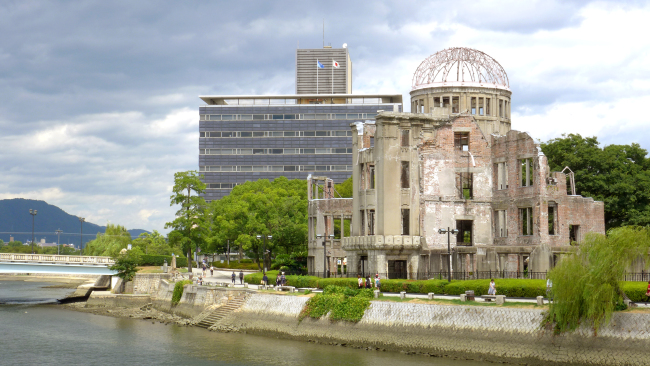
KH: How do you assess Japan’s foreign policy stance, which relies extensively on security ties with the US?
Mizumoto: Abe’s foreign policy is based on too much of realpolitik, justifying force against force. He has exclusively leaned on security alliance with the US to curb China’s growing regional clout through military expansion and territorial claims, as well as North Korea’s nuclear threat and missile provocations. But this is a very dangerous approach in my opinion.
Rather than utilizing all the tools available in his hands to improve relations with Beijing, Abe has resorted to the nuclear umbrella provided by Washington singlehandedly. He has not invested enough in the Japan-China relations through diplomacy, culture and people-to-people ties. What’s needed is confidence-building measures with Beijing. With Tokyo-Washington ties trumping all neighborly relations, this has inflamed discord with Beijing and Seoul and raised tensions in the region, particularly surrounding the Senkaku or Diaoyudao Islands in the East China Sea and Dokdo or Takeshima islands in the Sea of Japan.
Japan can and should pursue its security alliance with the US without nuclear weapons. Even taking into account threats by North Korea and China, the US’ military influence is strong enough to safeguard Japan without nuclear weapons or arms race.
Even if we needed the nuclear umbrella, we would not need so many arsenals around the world, with the US owning 4,500 nuclear warheads. America can play the role of a global police with a much smaller number of nuclear weapons.
As an equal partner of America, Japan can demand the US to take a large cut of its nuclear stockpile. But it seems that the Abe administration is even against Obama’s vision for a nuclear-free world, under the logic that Japan needs its nuclear umbrella. This contradicts the spirit of nuclear disarmament that has been promoted in Japan, which is the only country to be bombed by atomic weapons.
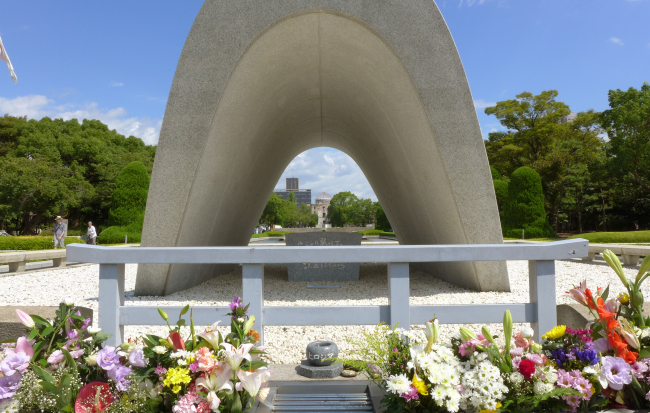
KH: How seriously do Japanese politicians and citizens take North Korea’s military threat, as Pyongyang has constantly engaged in nuclear brinksmanship and missile provocations against Japan?
Mizumoto: Japan’s defense community is very much serious about North Korea’s threats. But Japan cannot counter North Korea’s aggression alone. We need cooperation with South Korea in diplomacy, security and information-sharing.
Average citizens are not overly frightened by Pyongyang’s provocations, although politicians and diplomats take the threat more seriously. They sometimes use the issue to bolster their interests and bring in more security-related laws. It has emboldened right-wing politicians.
There are contradictions and inconsistencies in the judgement of the electorate. People have voted for the LDP, although they don’t support all of its policies. Citizens don’t have all the cards in their hands when they vote. Issues such as the ageing society, welfare, taxation, education and economic recovery are also important. Abe has been clever enough to weave these issues into his agenda. The Abenomics economic policy -- comprised of fiscal stimulus, monetary easing and structural reforms -- has been central to turning people’s attention away from security to the economy. The general perception is that Abenomics has been successful enough to revive the economy.

KH: What is the likelihood of revising Article 9 of the Japanese Constitution, which outlaws war as a means of settling international disputes between states? How do people perceive trying to roll back 70 years of Japan’s pacifism and militarizing its Self-Defense Forces and their operations?
Mizumoto: It’s not easy to revise Article 9, as doing so requires a two-thirds majority in both houses of the Diet and passing a national referendum.
(Despite numerous attempts by the LDP to amend Article 9, they have failed to achieve the large majority required, as revision has been opposed by several Japanese parties, including the Democratic Party of Japan and the Japanese Communist Party).
Even though the idea of amending the constitution has become popular among some segments of the society, it is not based on a deep analysis of the constitution. The majority of people, around 60 percent, seem opposed to revising the article. They have supported the conservative LDP, simply because they were disappointed by the Democratic Party’s poor performance.
Central to the push for revision is Nippon Kaigi, the nation’s most powerful right-wing lobby group. Abe belongs to this organization and endorses its ultranationalist views. That is why he visits the Yasukuni Shrine in Tokyo that memorializes people who died for Japan, including war criminals.
In Abe’s view, Japan is a very beautiful country with an unblemished record against errors since the ancient times through the modern era. He believes Japan has the right to restore its constitution to reflect the country’s proper place at home and abroad.
Abe resigned from his first post as prime minister between 2006-07, but since being elected for the second time, he has been centralizing his power and has responded nimbly to changing international relations. The liberals in Japan are aware of the situation, but due to the collapse of the Democratic Party, they have reluctantly supported his strong leadership. Another reason is that people view the stances of South Korea and China, particularly on territorial issues, as overly aggressive and nationalistic. So they take it as necessary that Japan should also have a strong leader like Abe.
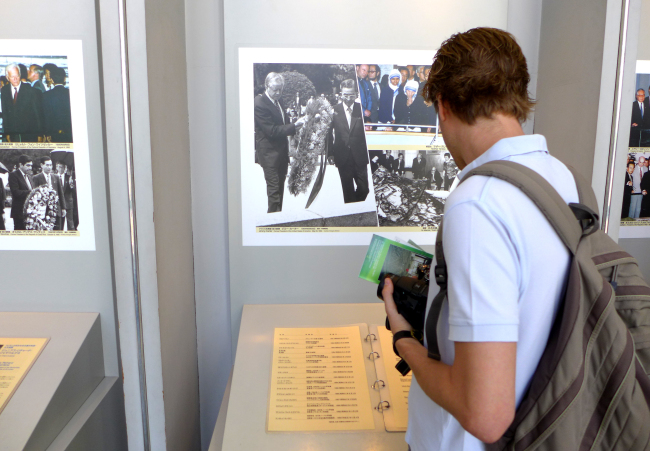
KH: How do you assess the civil nuclear energy program in Japan in terms of safety, energy efficiency and environmental impact? What is the state of the nuclear waste storage?
Mizumoto: I believe Japan should stop operating its civil nuclear energy program and examine the safety of all the nuclear fuel cycles. Until safety is verified, we should not turn on nuclear power plants.
Japan derives one-third of its energy from nuclear power, 10 percent from hydropower, and the rest from oil and liquid propane gas. The fact that Japan’s economy has been running without those power plants, most of which were closed since the Fukushima nuclear meltdown in 2011, indicates that the necessity of nuclear-generated power deserves questioning, contrary to what politicians, big companies and nuclear scientists say.
Civil nuclear energy is neither cheap nor safe. As demonstrated by the Chernobyl accident in 1986 and the Fukushima accident, it has disastrous consequences that last for generations. If we take into account all of the costs associated with running and maintaining nuclear energy, including its waste disposal and decommissioning of plants, it’s very expensive. Nuclear energy is controlled by big and powerful corporations and many vested interests in the government. Multinational corporations such as Toshiba, Mitsubishi and Hitachi are involved, and many subsidiaries depend on them. This makes it hard to untangle the business. People prefer to keep the machine rolling.
As a collective syndicate, it has controlled the country’s energy supply and politics since the 1950s. The industry builds schools, infrastructure and hospitals, provides cash and creates jobs if the local town accepts it. So the town suddenly becomes rich. Criticizing it is taboo in localities that house nuclear plants, because your village receives subsidies and some neighbors work in the plants.
Japan has a huge stockpile of plutonium as the only nonnuclear weapons state out of the six states capable of producing plutonium from uranium. So far 45,000 tons of highly radioactive nuclear waste have been kept at intermediate storage facilities near the 53 plants across the country. This is the most dangerous situation. The stockpile should be relocated to the final deposition site deep underground.
Under the Japanese law, the central government cannot force the local government to take in the nuclear waste. Currently two sites in Hokkaido and Gifu prefecture have been used as test sites before the final deposit. There are speculations that the government may have to dump it over there as it has made no agreement with local governments. Only up to 20 years is left until all intermediate sites run full, but no final site has been designated yet and no discussion is taking place about it.
By Joel Lee (joel@heraldcorp.com)
-
Articles by Korea Herald








![[Kim Seong-kon] Democracy and the future of South Korea](http://res.heraldm.com/phpwas/restmb_idxmake.php?idx=644&simg=/content/image/2024/04/16/20240416050802_0.jpg&u=)








![[KH Explains] Hyundai's full hybrid edge to pay off amid slow transition to pure EVs](http://res.heraldm.com/phpwas/restmb_idxmake.php?idx=652&simg=/content/image/2024/04/18/20240418050645_0.jpg&u=20240418181020)

![[Today’s K-pop] Zico drops snippet of collaboration with Jennie](http://res.heraldm.com/phpwas/restmb_idxmake.php?idx=642&simg=/content/image/2024/04/18/20240418050702_0.jpg&u=)